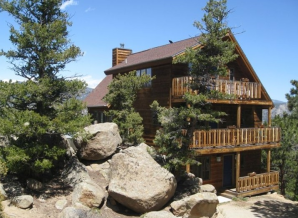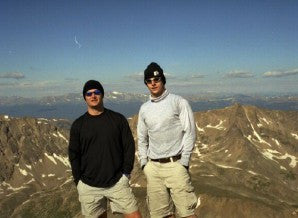Arbor Day is coming April 26th! Not that excited? Let me enlighten you. For me, the event conjures up images of elementary school celebrations with lots of brown and green construction paper and one poor sole (thankfully it was never me) that has to be the tree – covered in all kinds of materials and made to be the center of attention for what must seem like eternity.
For my high-altitude friends, I will share trivia you may not know about my top three favorites. Two of them are coniferous, or bearing cones and seeds. One is deciduous, or bearing leaves that fall off seasonally.
Interesting to note, coming out of the last Ice Age, coniferous trees covered much of the planet. Most coniferous trees prefer the cooler climes and can be found in northern hemispheres or higher altitudes. “There is only one species of pine (Pinus merkusii) whose native distribution crosses into the southern hemisphere, “ notes Dave Barnard, a Ph. D. Candidate working in Tree Physiology at Colorado State University.
Every 1,000 meters (or 3,281 feet) of elevation gain is similar to five degrees of latitude north. So species that are native to 10,000 – 12,000 feet (also known as the tree line as tree species cannot exist higher up) can also exist at sea level in Alaska. 
1. The Bristlecone Pine When I polled folks from 14ers.com on which was their favorite high altitude tree, the Bristlecone pine was by far the popular choice. This gnarly-looking tree is actually a collection of three species of pine. They grow in groves in arid regions of the Western United States.
Bristlecone pines take their name from the prickles that are on the female cones. Moreover, they are thought to be the oldest single living organisms known with age up to 5,000 years old. The oldest known Bristlecone pine is named Methuselah (after the longest-living person in the Bible) and is located in the White Mountains of eastern California.
There’s a reason they’ve lasted this long. The Bristlecone pine has actually adapted to thrive in the harshest conditions to minimize its’ threats from disease, insects and animals. Not only does it thrive in harsh conditions, it actually prefers them!
“With regards to Bristlecone Pines…” notes Jed, a Geologist from Littleton Colorado, “the ones that live on the colder, harsher, north-facing slopes live on average 2X as long as the ones living on the sunny south facing slopes.” 
2. The Aspen Aspen is not just a cozy, chic ski-village in the Rocky Mountains. This town takes its name from the trees found all around the region. The Aspen gives meaning to the approach of autumn with their gold leaves sharply contrasted against white bark.
Beneath the pretty exterior is a complex and ancient root system unlike most species. Aspen grow in large clonal colonies – large colonies with identical genetic attributes in a given location and come from a single ancestor. What does that mean? Well, although an individual tree may live up to 150 years old, the colony can be thousands of years old. One colony in Utah called Pando is estimated to be 80,000 years old, making it quite likely the oldest living colony of aspens.
The aspen is also the most wide spread broadleaf species in North America. The species has variants in Europe and Asia. Aspens also contain salicylates, compounds related to aspirin. Use of the leaves, buds and bark have been known to treat burns, irritations, swollen joints, aches and mild urinary tract inflammations. Try that one McGuyver.  3. The Lodgepole Pine The Lodgepole Pine rounds out the top three for sheer utility. The Lodgepole Pine gets its name by Native American tribes’ use in tipi construction. Tall poles made of the tree’s young trunks are used to prop up the main lodge for meetings and ceremonies.
3. The Lodgepole Pine The Lodgepole Pine rounds out the top three for sheer utility. The Lodgepole Pine gets its name by Native American tribes’ use in tipi construction. Tall poles made of the tree’s young trunks are used to prop up the main lodge for meetings and ceremonies.
As Europeans made their way west across North America, they also found the Lodgepole Pine to be of great use as a building staple: walls, roofs, foundations, boats, piers, furniture, etc. One remnant of this is the Old Faithfull Inn in Yellowstone Park. Built in 1904, the Old Faithfull Inn is made almost entirely of Lodgepole Pine and local stone, making it the largest log hotel in the world.
Lodgepole Pine and other pine species have earned their place as the preferred wood for many furniture manufacturers like Ethan Allen and IKEA (the Swedish mega-store). IKEA prefers pine for about 42% of its wood-based production. The designers there appreciate the softness of the wood, and how natural differences in each piece make their mass-produced furniture take-on one-of-a-kind character that changes over time. Important to note that IKEA leads the charge in big corporate sustainable practices, when it comes to wood cultivation, harvesting and use.
Lastly, the Lodgepole Pine has a unique reproductive history. It depends on fire for seedling germination. Fire is a natural occurrence with lightning strikes and the intense heat causes the right conditions to open the hard cones for reproduction. Rebirth. So there you have it. Go forth armed with this arboreal data and challenge your nearest Cliff Clavin (Cheers reference).
Sources: 14ers.com IKEA National Park Service Native Trees of Colorado Swedish University of Agricultural Sciences Wikipedia
Continue reading











